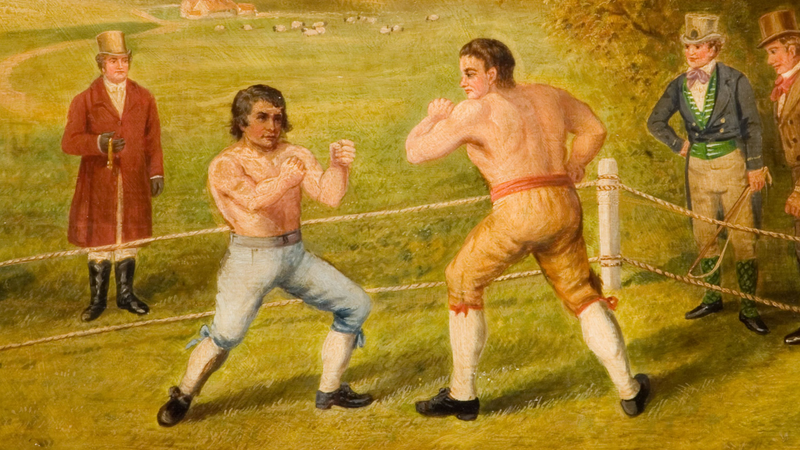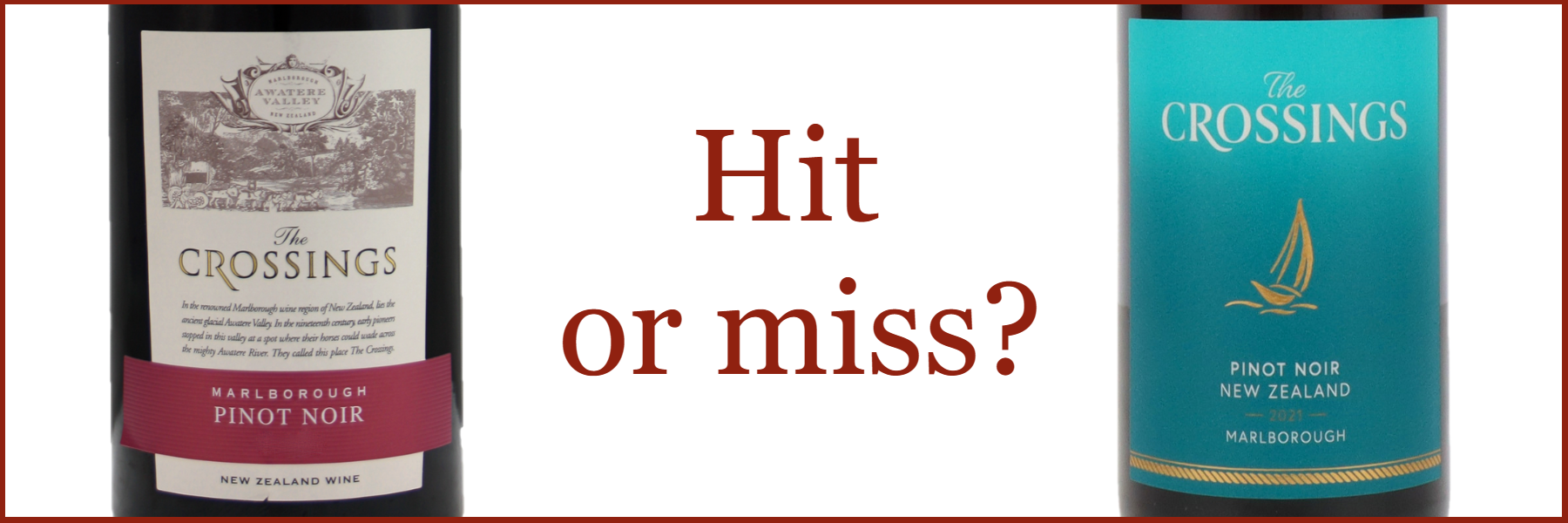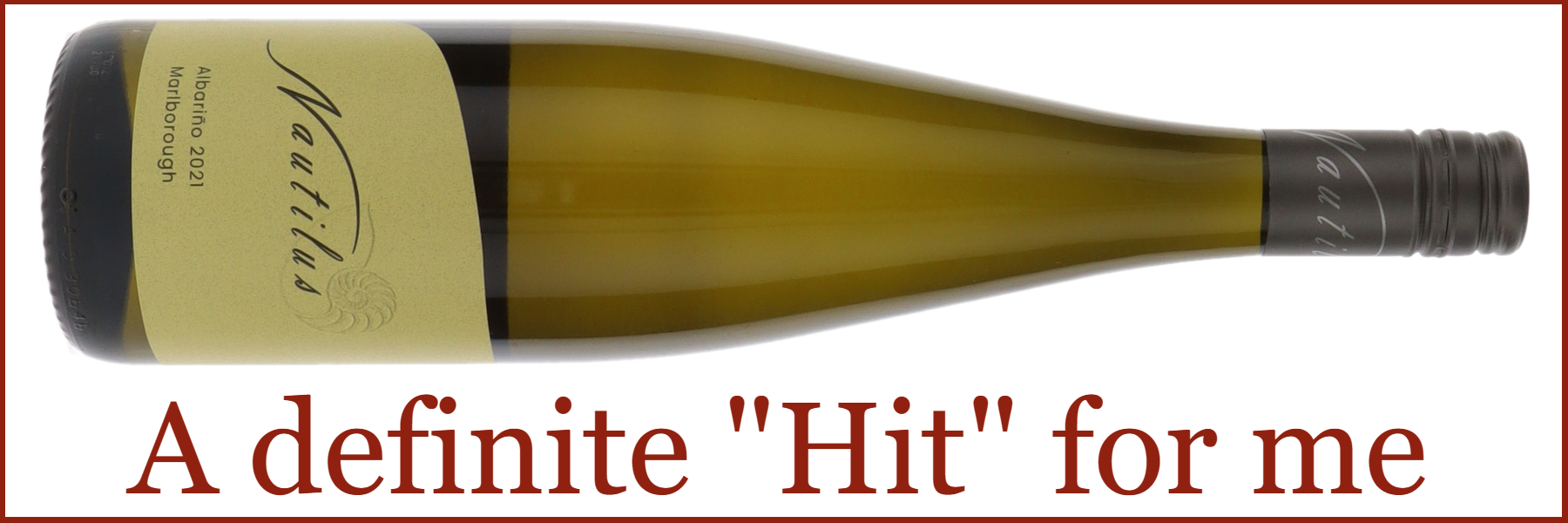Frazier's are a "traditional" wine merchant offering, well, what you might expect... plus a little something extra on the more adventurous side. But will the "adventurous" wine sell enough to justify stocking it? Has it got the ability to punch above its weight?
For example, many people like their ultra traditional Bordeaux to have a white label with a picture of the chateau on it. If it looks right, it must taste right, so it's going to do well on the list. If you want to go modern, have you ever seen a bottle of the "second label" of Mouton Rothschild?
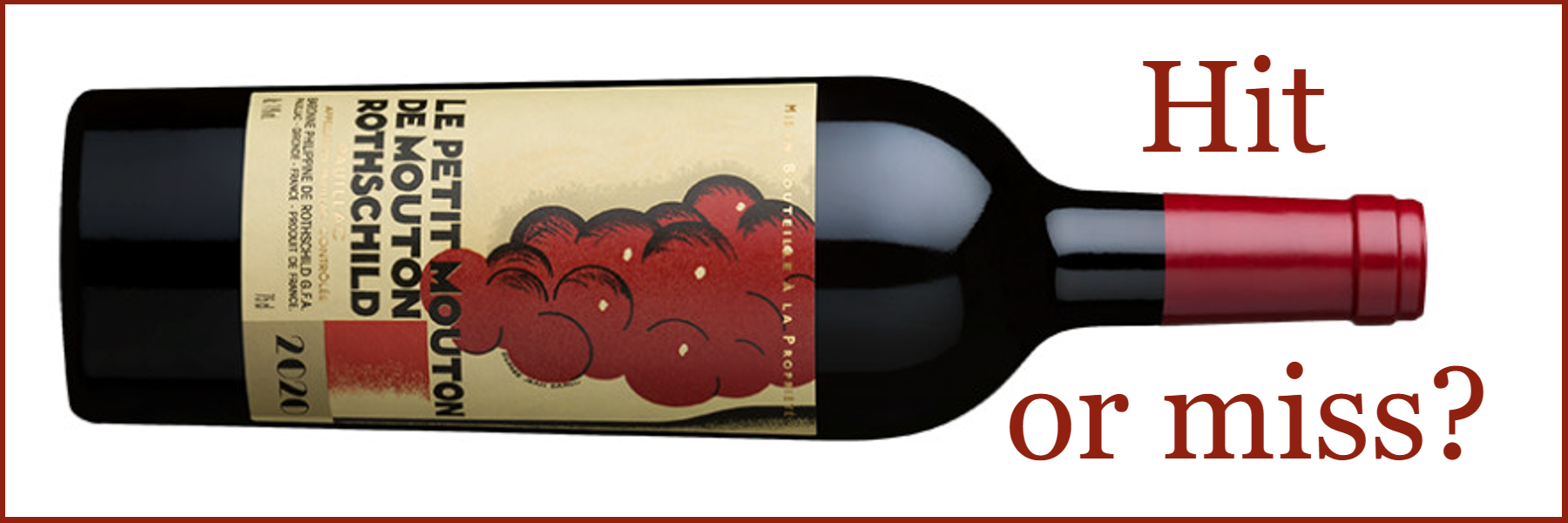
Give a child a red crayon and ask them to draw a bunch of grapes and you might just end up with the above label for Le Petit Mouton. Note that this label has been in use for many years and obviously sells at its £250 a bottle price point! I've heard a few comments in the past from wine-lovers who wouldn't even consider it because it just didn't look "right". I doubt those same consumers would be attracted by the "artist" labels on the main wine, Mouton Rothschild, itself. These are specially commissioned pieces of art which use different artist's work each vintage and are sometimes quite traditional, but on other occasions are very cartoon looking. Over £750 a bottle? For some, a perfectly acceptable design, for others, a bottle of neighbouring First Growth, Lafite Rothschild, is a "must have" with its plain cream background to an old-style etching of the property and its surroundings. Only a £1000, or so, for tradition, but they're both spectacular quality wines, so does the label really matter?
Maybe there are other factors affecting your choice of wine for this weekend?
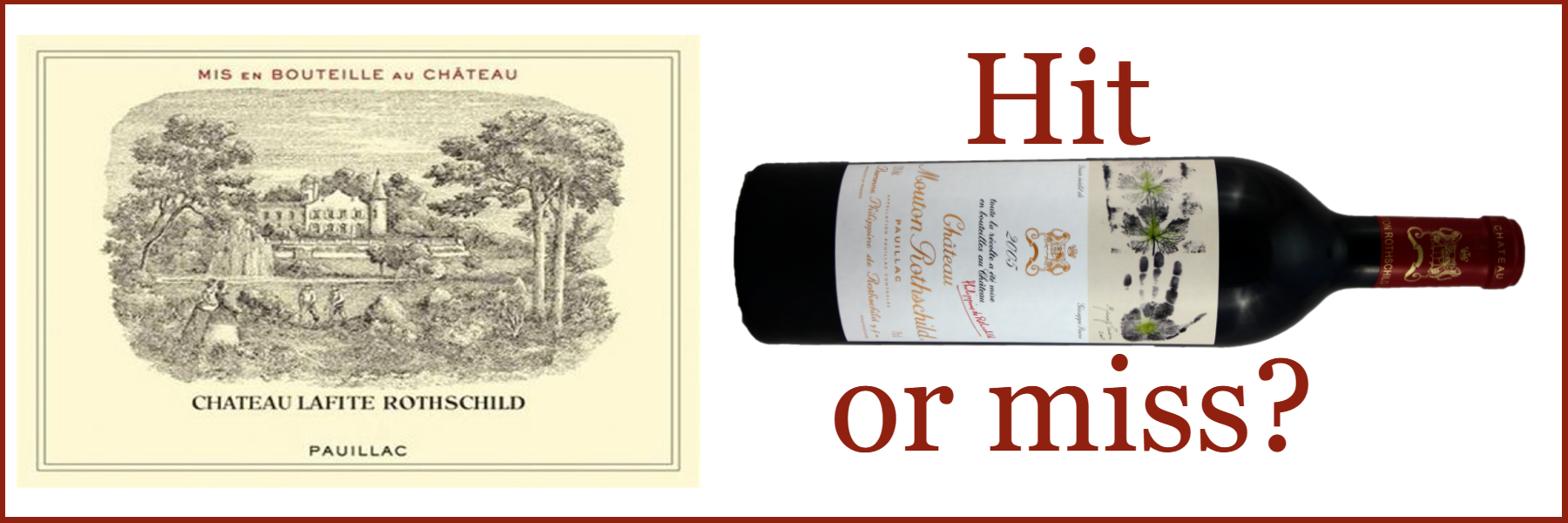
There are an almost infinite number of wines on the worldwide market, but what makes any given wine successful?
Is it purely based on the quality of the contents in the bottle?
Personally, I enjoy a wine that really excites my senses; the complexity of flavour and texture of really good wine, but what drew my attention to that particular bottle in the first place?
There's going to be some form of marketing and design involved away from the viticulture and viniculture that produces the delicious wine which we all want to drink.
You might have heard about a new wine by word of mouth, read about the latest designer bottle from a TV celebrity in a magazine article, or seen it online on a wine merchant's website or some form of social media content. Any of these might be enough to tip you over the edge into making a purchase without ever actually being in the same room as a physical bottle. Just imagine: combine Love Island with TikTok and Provence rosé wine in summer... a sure-fire winner!
If you require more information before taking the plunge, perhaps a perusal of the shelves in a bricks-and-mortar store is going to help. Just reading back labels, if well written with proper background notes, will give an insight into the style and quality. Generic notes are pointless and, if you're visiting a real wine shop you're very likely to get some personal recommendations about wines you'd never even considered trying. Don't be afraid to ask the staff for help!
Enthusiasm about a wine is a very important indicator, but beware the endless "5 star" reviews from its fans. If you're into your wine for its taste, rather than just the alcoholic effect, it's surprising how many consumers think every bottle they've ever had is the "best thing since sliced bread" and will automatically give it the highest rating possible and wildly ecstatic comments. Often the term "smooth" used in these type of customer comments can be substituted for the word "sweet" when describing a wine. Residual sugar left in a wine can mask many winemaking faults and gives an appearance of quality that isn't really there. That doesn't necessarily make all sweeter wines "poor" and drier wines "good", it's all about balance of the wine's component parts. Yes, wine is only made from grapes, but their quality varies dramatically and the grapes' acid/tannin makeup in a wine is vital to the final drink you get to consume. Quality takes time and time is money. So, in my opinion, you generally get what you pay for.
Of course, a lot depends on a wine's price and your budget. Some people will only buy wines at a certain price point. It doesn't matter what that price is, some bottles must be awful because they're considered to be too cheap, or wines that are expensive must be poor value compared to that bargain £4.99 (or less) bottle from the discount supermarket. Pricing can trick you into believing almost anything about the potential quality before doing the obvious and tasting it to see for yourself.
Meanwhile, back to the bottles themselves, what makes them attractive to the potential buyer?
Heavy glass packing, or carbon neutral carton? Brand name or own label? Traditional or modern design? Small, unique micro winery with hand-made wines or large volume "safe" brands produced on an industrial scale? Everything has its place, it depends on the market aimed at by a given wine. Most people want to drink their purchase rather than treat it as an investment, but in the end, all wines have to be commercial and wineries rely on repeat purchases from happy customers, year after year, to remain in business.
Some wineries stick with a label/bottle design which never changes over decades, whilst others seem to have a total makeover every couple of years. Does the change achieve the desired result? Sales up and more new customers attracted to the brand from competing rivals? Sometimes the once "on trend" look becomes dated to the average drinker and the marketing department (in big companies) swings into action. Focus groups are formed and the "new look" is created by the graphics team. On occasion, wines can have a completely different design for different markets; images, colours and fonts can make a huge difference in appeal depending on the target audience. For example, male v female, or young v old. I find that often these wines are not the best tasting and rely heavily on the company's advertising spend to keep their listings on supermarket shelves. So, shop with an independent and don't stick with the mainstream brands if you're prepared to try something that's produced by small-scale, hands-on, exciting wineries. It is, after all, still wine in the bottle, and you like wine, don't you? That's why you're reading this blog!
So, which is the old label and which is the new? Which one would you choose to buy?
Another way of finding the great from the merely good is to find a wine critic whose palate matches your own. Don't assume that any old wine with a 90+/100 rating is going to be memorable. Hopefully, the hit rate will be high, but there's a thing called "points inflation" whereby various critics seem to want to out-score each other by giving more wines a very high score, because it must mean they're a better critic. Each year the scores move up a notch, so you're now really looking for a 95+/100 score for an out-of-this-world bottle. 100 points almost means nothing if everything gets the same rating. I've had some 100 point bottles at a Robert Parker tasting in London where I suggested that the two high-scoring samples would taste better if they were blended together. I know it's personal taste, but what I didn't realise at the time was that the person serving the wine was the winemaker himself. Oops!
Trust your own palate. It's the best thing to do. If you're at a blind tasting, don't follow everyone else. If you think the wine is rubbish, say so! If you think it's a faulty bottle, get someone who knows the wine to check it as it's amazing how many people will just accept what is being served. Beware "snooty" sommeliers in some posh restaurants pushing an expensive, high margin fine wine, who won't take "no" for an answer to your request for some varied pairings to your starter course, but if you asked for something "unique", don't be surprised if you're served a botrytis affected "orange" Ribolla wine from Friuli fermented in a clay amphorae. You were warned. It's really good if you like the wild flavours of the natural style, but it's not a wine for everyone, so keep to the classic white Burgundy or Marlborough Sauvignon if you prefer to err on the side of caution. As a wine enthusiast you should be prepared to try anything that looks exciting and even a few which don't.
For myself, I think the fun way to discover the latest "hit" is to go where the wine is made. These days, in the "cost of living crisis", it takes a lot to justify flying off around the world to taste wine but, if you can, do it at least once. Try to take a non-touristy approach and show the producers you've come a long way to see them and taste their wines... doors will open, family reserves with be poured enthusiastically and great new experiences and stories will be uncovered along the way.
You might be the person who discovers the latest and greatest bottle so keep on tasting to find the next "hit" wine.
A Marlborough wine which isn't Sauvignon Blanc and is still definitely a hit for me. The Nautilus Albarino has all the subtle peach fruit of Galicia, but with a deeper, fruitier character from Marlborough. Made by Australian family company, Hill-Smith, you could cheat a bit and sample the delicious 2021 vintage (pictured above) for Australia Day (January 26th), or wait a few days for New Zealand Wine Week to try the Decanter recommended 2022. Both are excellent value at £22.99/bottle.
A real knock-out wine!
[That bare-knuckle fight...it lasted 62 rounds!]

